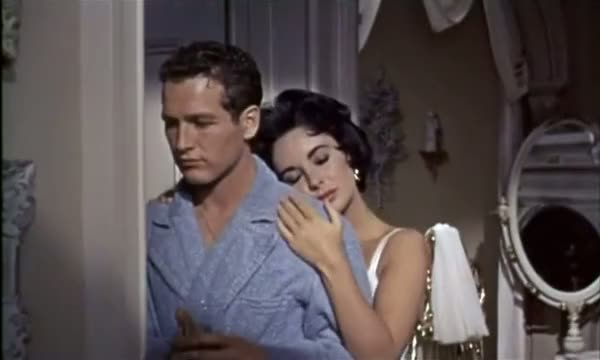Réalisation:
Richard BrooksPhotographie:
William H. DanielsMusique:
Charles WolcottActeurs·trices:
Elizabeth Taylor, Paul Newman, Burl Ives, Jack Carson, Judith Anderson, Madeleine Sherwood, Larry Gates, Vaughn Taylor, Hugh Corcoran (plus)VOD (3)
Résumés(1)
Maggie et Brick forment un couple en pleine crise : Brick semble détester sa femme et déprimé par le suicide de son meilleur ami se réfugie dans l'alcool. Maggie brûle de désir pour l'homme qu'elle aime, mais toutes ses «chatteries» n'y font rien. La grande famille se réunit dans une villa autour du patriarche malade, Big Daddy. La famille, qui lui cache son état, lui joue une atroce comédie pour son dernier anniversaire. (Splendor Films)
(plus)Vidéo (1)
Critiques (7)
Cat on a Hot Tin Roof is a masterclass in turning a stage play into a cinematic triumph. It’s a sharp, emotional rollercoaster powered by the incredible performances of Elizabeth Taylor and Paul Newman. The film excels in those tense moments when a seemingly dysfunctional family lays bare their truths. One character speaks, another listens, yet the speaker remains unaware of being heard. It's pure brilliance. For a film from 1958, it's remarkably mature and timeless. This gem will continue to resonate for generations to come.
()
I searched my memory in vain for when I last saw such functional yet perfectly non-violent morality. And yet, when I looked into the unfolding story of the seemingly vain Elizabeth Taylor and the inexplicably worn-out Paul Newman, I surely did not expect the final emotional appeal to the viewer in the form of "It is important to be able to believe in family and genuinely love each other." In this film, there are surprisingly many unpredictable things, and even though it actually only consists of long dialogue with changing actors and alternating attention on the main characters, I had no hope of tearing my eyes from the screen. Thanks to Burl Ives's charisma and the drunken fervor in Newman's eyes, this brilliantly developed plot earned points on all fronts.
()
"People like doing what they used to do after they've stopped being able to do it." Although Maggie ultimately holds on to the hot tin roof, after the adaptations of Tennessee Williams's play, it’s more like Tomcat under a Hot Tin Roof. It's no surprise that Paul Newman's Brick is drinking. Some would start just for Dixie performed by the band of headless freaks, but under the Pollitt family's roof, there is much more to forget. Merciful lies and ruthless truths. The path from the cage of hypocrisy leads only by prioritizing love over material goods, but that's something that won't last forever, even for cats and tomcats.
()
I am reviewing Richard Brooks' film many years later, but even today I clearly remember most of the scenes and polished dialogues. The drama about crumbling family relationships and the pretense that must be played in the name of traditional conservative values of the Southern environment is built on the excellent acting of the central duo. Especially for Elizabeth Taylor, as it was her best performance on the movie screen, alongside the film Who's Afraid of Virginia Woolf? The film does not deny its theatrical roots, but Tennessee Williams is one of the best authors, making it an advantage. Overall impression: 95%.
()
I was no stranger to Williams' whirlwind dialogue from the first time I saw the play in theaters, but the tight direction and engaging actors managed to make my knees buckle anyway. To elevate more than a hundred minutes of family dialogue in one house into a full-fledged cinematic fresco takes a serious piece of genius. Richard Brooks had it.
()




Annonces